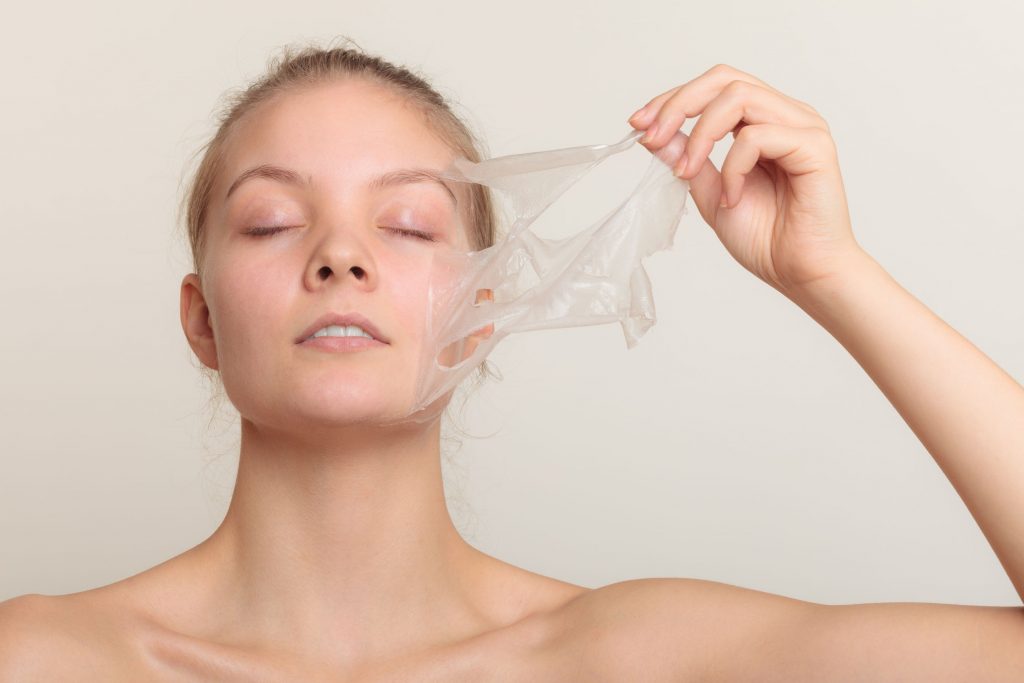What is a chemical peel?
A chemical peel is a technique used to improve and smooth the texture and the appearance of the skin on the face, neck or hands.Facial skin is mostly treated, and scarring can be improved. Chemical peels are intended to remove the outermost layers of the skin. To accomplish this task, the chosen peel solution is applied to the skin that causes it to exfoliate and eventually peel off. Resulting wound healing processes begin to regenerate new tissues. The new, regenerated skin is usually smoother and less wrinkled than the old skin. The new skin is also temporarily more sensitive to the sun.
History
Goes back a long time and has been around for a while! Resurfacing and restoring skin with chemical peel was introduced in the second half of the 19th century by the Austrian dermatologist Ferdinand Ritter von Hebra (1816-1880), founder of the Vienna School of Dermatology. He used exfoliative agents, like phenol, croton oil, nitric acid in various cautious combination for treating freckles and skin irregularities.
Types Of Chemical Peels
There are three basic types of chemical peels defined by the depth of skin treated:
- Superficial or lunchtime peel: Alpha-hydroxy acid or another mild acid is used to penetrate only the outer layer of skin to gently exfoliate it. The treatment is used to improve the appearance of mild skin discoloration and rough skin as well as to refresh the face, neck, chest or hands.
- Medium peel:Glycolic or trichloroacetic acid is applied to penetrate the out and middle layers of skin to remove damaged skin cells. The treatment is used to improve age spots, fine lines and wrinkles, freckles and moderate skin discoloration. It also can be used to smooth rough skin and treat some precancerous skin growths, i.e. actinic keratosis.
- Deep peel: Tricholoracetic acid or phenol is applied to deeply penetrate the middle layer of skin to remove damaged skin cells. The treatment removes moderate lines, age spots, freckles and shallow scars. Patients will see a dramatic improvement in skin appearance. The procedure is used on the face and only can be performed once.
Types Of Peel Solutions
There are several types of chemicals used as peels solutions depending on the desired end results.
Two most commonly used chemicals are:
Alpha Hydroxy Acid Peels
Alpha hydroxy acids (AHAs) are naturally occurring carboxylic acids such as glycolic acid, a natural constituent of sugar cane juice and lactic acid, found in sour milk and tomato juice. This is the mildest of the peel formulas and produces light peels for treatment of fine wrinkles, areas of dryness, uneven pigmentation and acne. Alpha hydroxy acids can also be mixed with facial washes, serums or creams in lesser concentrations as part of a daily skin-care regimen to improve the skin’s texture.
There are five usual fruit acids: citric acid, glycolic acid, lactic acid, malic acid and tartaric acid. Many other alpha hydroxy acids exist and are used. AHA peels are not indicated for treating wrinkles. AHA peels may cause stinging, skin redness, mild skin irritation, and dryness.
Beta Hydroxy Acid Peels
Salicylic acid is a beta hydroxy acid. It is antibacterial and anti-inflammatory and, as a result, works well for acne. Salicylic acid also has the ability to reduce the spots and bumps associated with acne. It is becoming common for Beta Hydroxy Acid (BHA) peels to be used instead of the stronger Alpha Hydroxy Acid (AHA) peels due to BHA’s being oil soluble. Studies show that BHA peels control sebum excretion, acne as well as remove dead skin cells to a certain extent better than AHAs due to AHAs only working on the surface of the skin.
FAQ’s
CLICK HERE TO READ FREQUENTLY ASKED QUESTIONS
Request an appointment online or call (240) 686-1222. We will do our best to accommodate you.

 (240) 686-1122
(240) 686-1122 (240) 686-1124
(240) 686-1124



